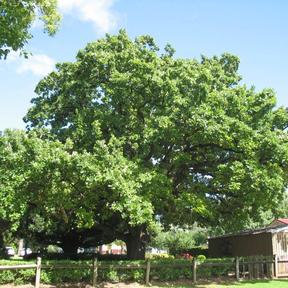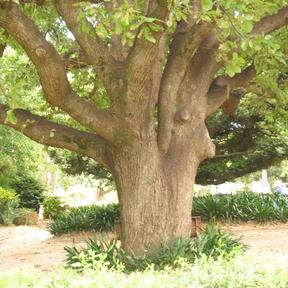Level of Significance
- File
- Local
- Regional
- State
- National
Age (approx)
90yrsTrees
1Diameter
1mHeight - 17m


Details
- Seed/Propagation Stock (Scientific)
- Outstanding species (Scientific)
- Landscape (Social)
- Landmark (Social)
- Contemporary association (Social)
- Park/Garden/Town (Historic)
- Person/Group/Institution (Historic)
- Attractive (Aesthetic)
- Species/Location (Aesthetic)
Statement of Significance
The rich, fertile soil, temperate climate and the interest of many of its citizens in things botanical, has resulted in theToowoomba region’s ability to grow a wide range of indigenous and non-indigenous plants. In 1860, the area was the first to hold an Agricultural Show in Queensland – 15 years before Brisbane. Walter Hill, the then Government Botanist and first curator of the Brisbane City Botanic Gardens, travelled to Toowoomba to advise with the design and planning of Queen's Park and street plantings in Toowoomba. He subsequently imported many tree species from Europe, Asia and other parts of the world to be planted there. Hill Street in Toowoomba is named in his honour. The town attracts many visitors in September for its famous Carnival of Flowers, where people come from near and far to enjoy Toowoomba’s many parks and gardens. Samuel Stephens, a Toowoomba businessman and major public benefactor, purchased ten acres of house blocks in 1931 and developed it into planted parkland. He donated it to the citizens of Toowoomba in 1934. Whilst developing the park, Stephens had an interest in plants from south-east Asia and imported plants from Japan, China and the rest of the region. This is the largest, oldest and most stately of the many English oaks in Toowoomba and is a magnificent tree, as well as being a probable seed source for many other trees of this species across Toowoomba and elsewhere. It was planted by Samuel Stephens, a Toowoomba businessman and major public benefactor.
This tree is an important source of seed or propagating stock as it may well be the parent of many of the other English oaks in the city.
It is an outstanding example of the species. The tree makes a significant contribution to the landscape of this historic park. It has contemporary association with the community as it is a gathering place for visitors and workers. It is cool and shady and has an associated seat. The tree is associated with Samuel Stephens, founder of Laurel Bank Park. It is a magnificent tree – stately, wide-spreading, deciduous in winter and densely shady in summer. This is a better than an average example of its species.
The tree is located in the eastern corner of the park near the intersection of Laurel Lane and the park's north-south road.








